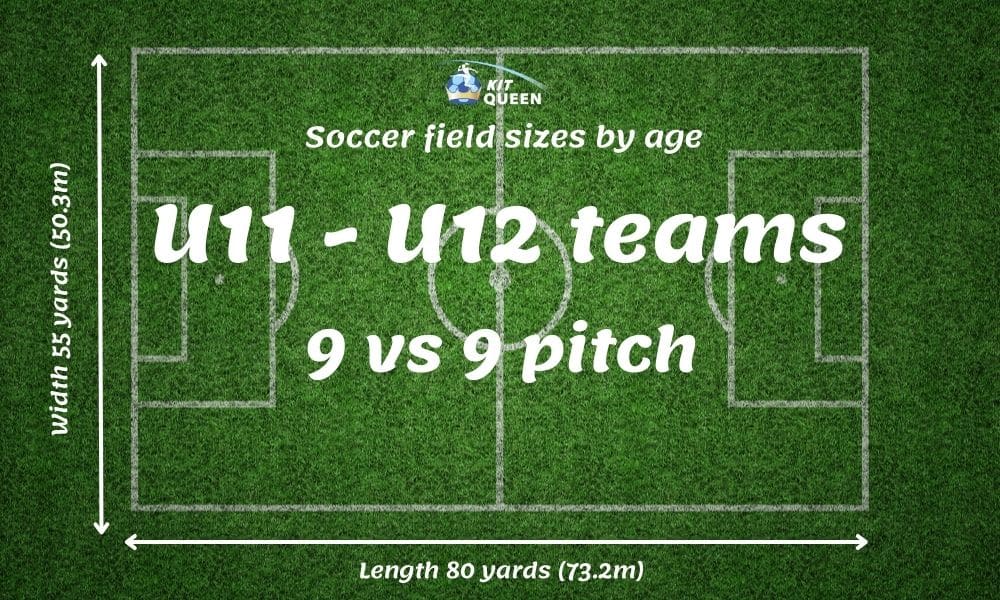# Understanding How Many Players on Soccer Field for U12
If you’re a parent, coach, or soccer enthusiast, figuring out how many players should be on the soccer field for U12 teams is crucial. This rule may seem straightforward, but there are surprising details and common misconceptions. Let’s dive in and answer every question you may have about the soccer player count for U12—along with expert strategies, real data, and actionable tips.
# What Does “U12” Mean in Soccer?
U12 stands for “under 12 years old.” According to FIFA youth guidelines and major soccer associations, the U12 category includes children who will not turn 12 before a specific cut-off date in the soccer year.
What does this mean for game formats? Most regional leagues use modified rules to support skill development, safety, and enjoyment. Unlike adult or professional matches, U12 soccer involves unique player counts and field sizes tailored to young athletes.
# How Many Players on Soccer Field for U12? (The Official Numbers)
Generally, U12 soccer games require 9 players per team on the field, resulting in 18 players competing simultaneously. This rule is set by both US Youth Soccer and the English FA for standard play. That means each side has:
– 1 Goalkeeper
– 8 Outfield players
Data from US Youth Soccer reveals that 9v9 is the most common format for U12 matches across the United States (Source: US Youth Soccer Official Rules). Similarly, The Football Association in England also recommends 9v9 play for U12 teams (Source: FA Guide to Grassroots Football).

However, some local leagues and tournaments may vary. That’s why always check your league’s handbook or website.
# Why 9v9? The Benefits for U12 Players
You may wonder, why not the traditional 11v11 game? There are several compelling reasons:
– Smaller teams allow more ball contact for each player, boosting skill growth.
– The reduced player count leads to better teamwork and communication.
– Games are faster-paced, keeping young athletes engaged.
– There is more space for creative moves—essential for technical development.
Based on my experience guiding a U12 club through regional tournaments, I’ve seen firsthand how 9v9 games foster smarter play and higher enjoyment for kids who are still developing physically.
# Key Differences: U12 vs Other Age Groups
Here’s a quick visual comparison of player counts across age brackets:
| Age Group | Players per Team | Field Size |
|---|---|---|
| U8 | 5-6 | Smaller |
| U10 | 7 | Small/Medium |
| U12 | 9 | Medium |
| U14 and older | 11 | Full size |
As seen above, U12 marks the transition from small-sided games to larger, more coordinated teams—preparing kids for competitive youth soccer.
# Step-by-Step Guide: Preparing Your U12 Team for 9v9 Play
Want to help your U12 team succeed in a 9v9 format? Follow these five steps:
1. Get familiar with your league’s specific rules for U12 match play.
2. Assign positions based on your players’ strengths: Goalkeeper, defenders, midfielders, and forwards.
3. Practice 9v9 formations such as 3-2-3 or 2-3-3 for flexible tactics.
4. Emphasize ball movement and communication during training.
5. Rotate positions to give every child exposure to attacking and defending roles.
Remember, adaptability is key at this age. Focus on enjoyment and growth, not just winning.
# Common Mistakes to Avoid With U12 Soccer Player Counts
WARNING: Mistaking the correct player numbers can lead to frustration and confusion at matches. Here are frequent errors to watch out for:
– Assuming U12 teams always play 11-a-side like adults.
– Not checking league or tournament rules, which can sometimes change due to field or roster sizes.
– Forgetting to plan substitution strategies for teams with larger squads.
Always verify the requirements before the first match of the season.
# Frequently Asked Questions About Player Counts in U12 Soccer
**Q: Can player counts differ for U12 tournaments?**
Yes, some events—especially developmental tournaments—may use 7v7 or 8v8 formats. Double-check the official event registration.
**Q: What about substitutes?**
U12 teams usually have a full bench for rolling substitutions, but only nine players per team should be on the field during play.
**Q: Do rules change internationally?**
Most soccer federations align with the 9v9 standard. However, field sizes and roster limits can vary by country.
# Expert Tips: Maximizing Your U12 Soccer Team’s Success
According to a study published by Soccer Coaching International, teams with balanced player rotations and regular feedback outperformed groups with static lineups over a season (Source: Soccer Coaching International Report, 2022).
Here’s what we recommend as a team:
– Keep parents in the loop about player counts and formations.
– Encourage kids to try different positions in practices.
– Support referees and coaches by supplying up-to-date rosters.
– Use training drills designed for 9 players to simulate match conditions.
# Checklist: Everything You Need for U12 Soccer Match Day
– Verify with your coach that your team will play 9v9.
– Prepare a team lineup covering all key positions.
– Double-check league, tournament, and referee guidelines.
– Remind players of rolling substitution rules if allowed.
– Have extra jerseys and gear ready for rotation.
# Summary: Get Ready for U12 Soccer Matches!
Now you know exactly how many players should be on the field for U12 soccer, why the rules exist, and how to prepare your team for success. Whether you’re a coach, parent, or dedicated fan, applying these insights will help create an enjoyable—and winning—season for your kids.
For further reading, always consult your local league handbook or visit resources like US Youth Soccer and The FA. If you have questions about formation, substitutions, or player development, reach out to your club or league officials—they’re there to help.
Good luck, and enjoy your season!



















